
- Joe Mixon is a trusted fantasy starter: Mixon has finished as a top-20 fantasy running back every year outside of his rookie season, and it’s safe to expect that streak to continue this season.
- C.J. Stroud adds new weapons: Most of the Houston Texans‘ early draft picks were to improve the passing game, which could lead to more passing attempts and fewer carries by Mixon.
- Subscribe to PFF+: Get access to player grades, PFF Premium Stats, fantasy football rankings, all of the PFF fantasy draft research tools and more!
Estimated Reading Time: 5 minutes

PFF’s Fantasy Football Player Profile series delivers the most in-depth fantasy football analysis available for the 2025 season.
Using PFF’s exclusive data, we evaluate player performance, competition for touches and how teammates and coaching staffs will impact each player’s fantasy football outlook.
Last updated: 7:15 a.m. Tuesday, May 14
Player performance
Joe Mixon was a second-round pick by the Cincinnati Bengals in 2017. From 2018-2023, he consistently had an RB7-RB11 finish, outside of one season. He averaged anywhere from 15-20 carries per game. As his career progressed, he would get more involved in the passing game, and the offense improved, leading to more touchdowns.
He was a good running back with a lot of volume. His PFF rushing grade generally fluctuated from 74.0-82.0 each season and 71.0-81.0 overall. He’s been good enough to remain a starter, but never good enough to be among the NFL’s elite fantasy talents. The Houston Texans traded for Mixon last season, and it was more of the same. Mixon was tied for eighth in fantasy points per game, finishing with 17.5 carries per game and a relatively average level of play.
Mixon ranks fifth to eighth in most per-game metrics over the last five years. That includes 66.1 rushing yards per game, 45.8 yards after contact, 0.63 rushing touchdowns, 10.3 fantasy points from rushing and 16.7 PPR fantasy points.
Mixon has been known as a two-down back throughout his career, as both the Bengals and Texans have used other running backs on third downs, but Mixon has been a decent receiving back in recent seasons. Mixon ranks sixth over the last three seasons in receptions and receiving yards. His receiving grade is the eighth-highest among the 42 running backs with at least 500 routes run. It’s unlikely that Mixon will start playing on third downs, but he is fully capable of catching passes on earlier downs.
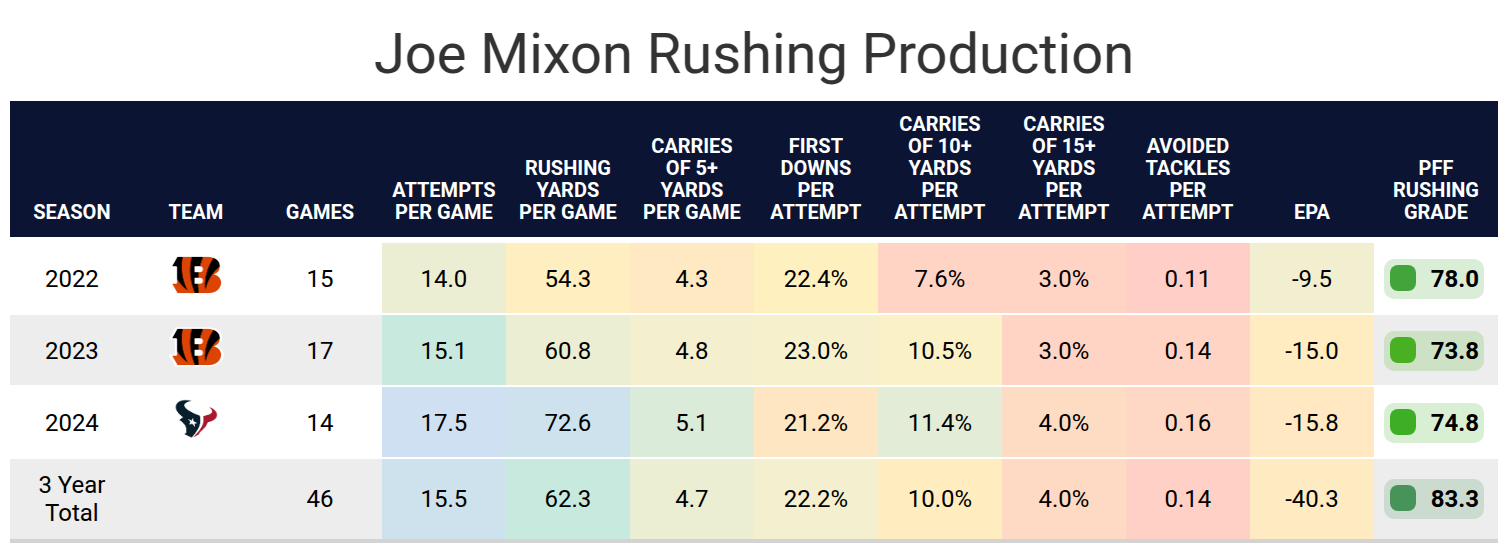
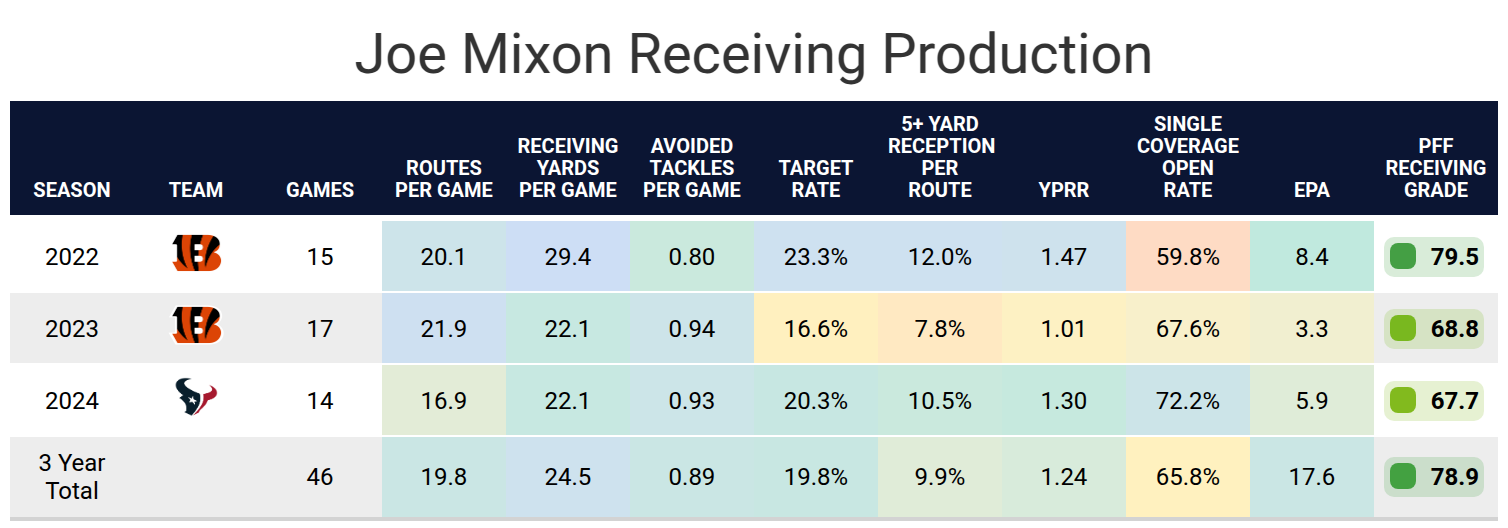
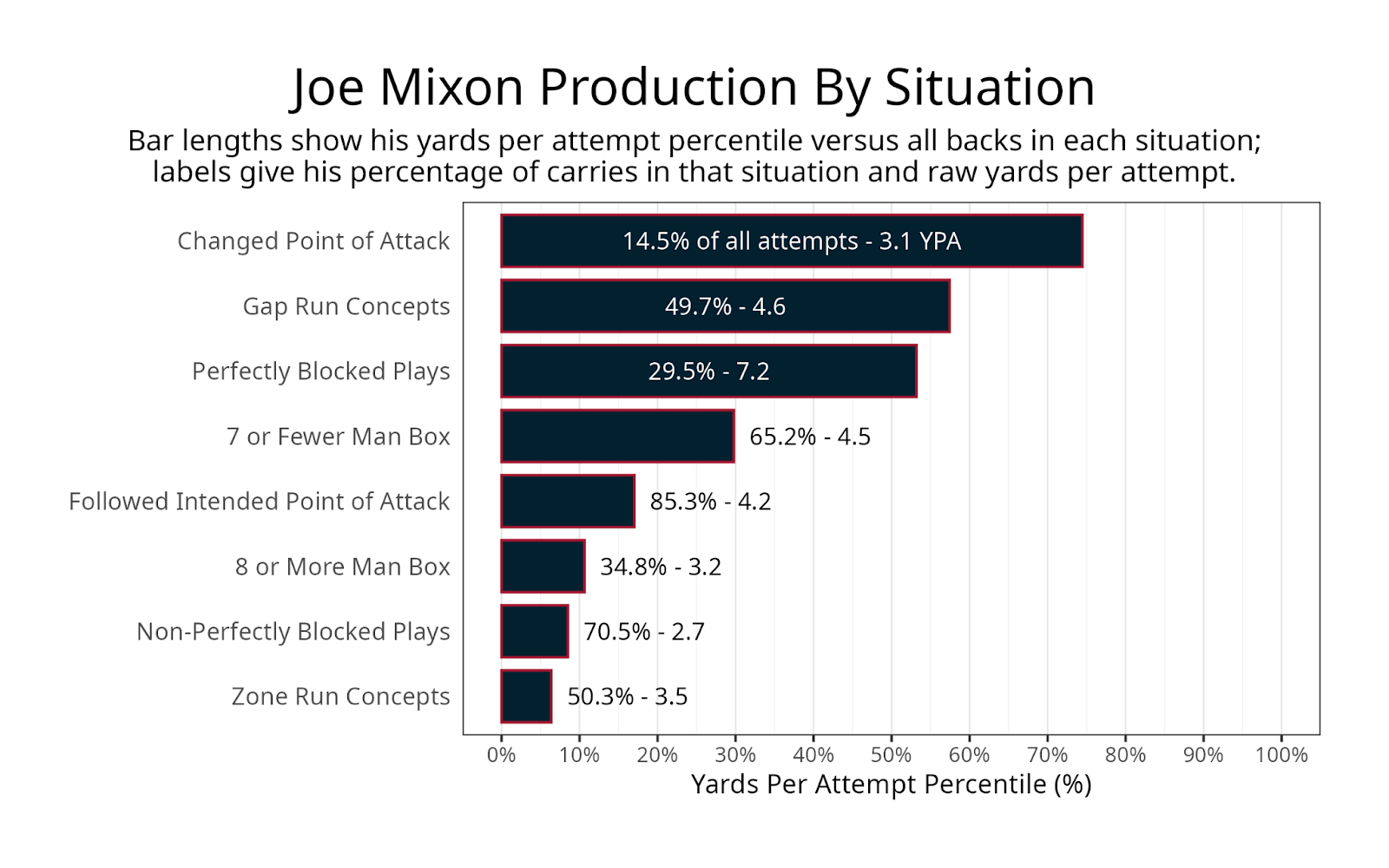
Projected role
Mixon’s role was largely similar in Houston as it was in Cincinnati, except for the two-minute drill. While Mixon’s target rate was higher in Houston than in Cincinnati, his routes run per game notably decreased due to the lack of two-minute drill snaps. Mixon’s carries per game were up despite having a similar role because he received the ball much more often when he was on the field. The Bengals have Joe Burrow and Ja’Marr Chase and Tee Higgins. C.J. Stroud isn’t currently on Burrow’s level, and the Texans had several injuries at wide receiver, so they had to rely more heavily on Mixon.
The backfield looks largely similar this season, as third-down back Dare Ogunbowale and primary backup Dameon Pierce are still on the roster. The team drafted Woody Marks in the fourth round. Marks seems likely to take over for Ogunbowale as the passing-down back, but probably won’t majorly cut into Mixon’s playing time.
Mixon will be 29 years old by the start of the season, and his 1,816 career rushing attempts rank second-most behind Derrick Henry among active running backs. It’s possible that, given Mixon’s age and previous workload, Pierce or Marks could cut into Mixon’s playing time a little bit.
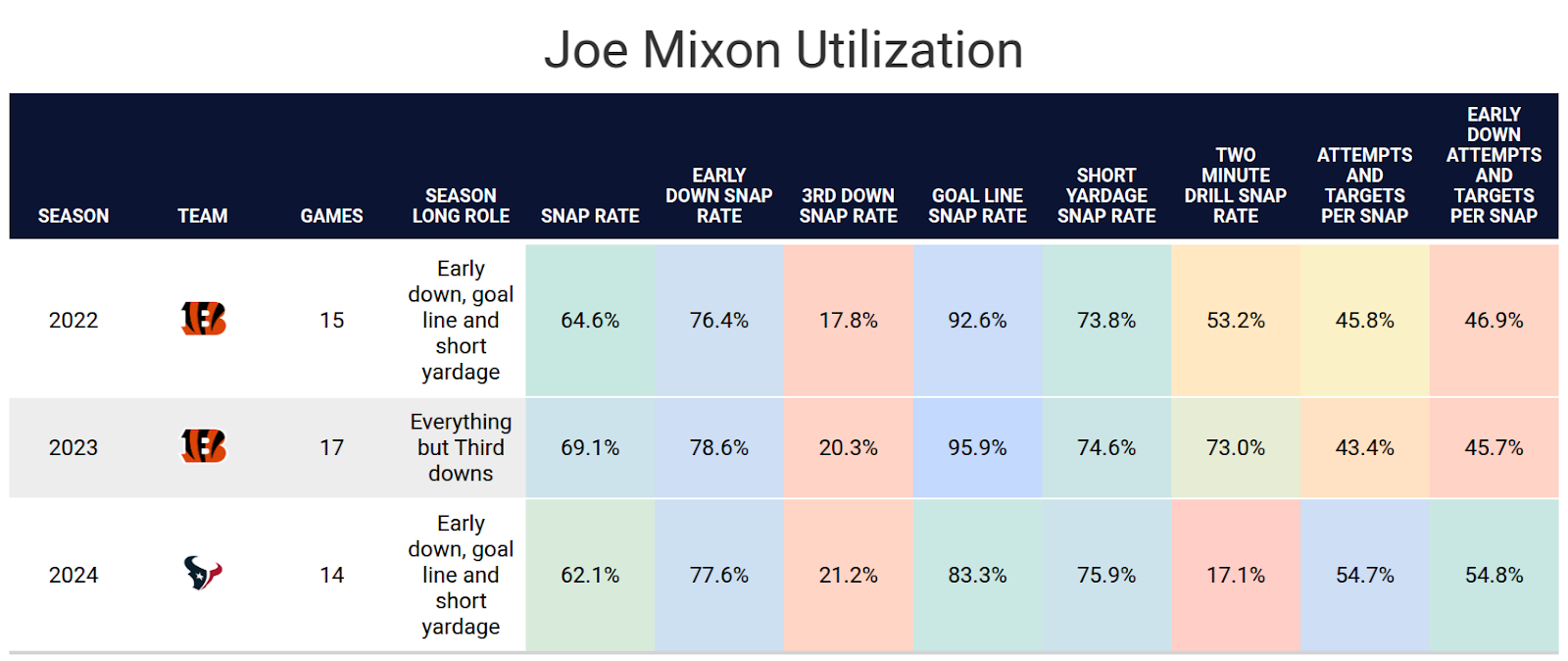
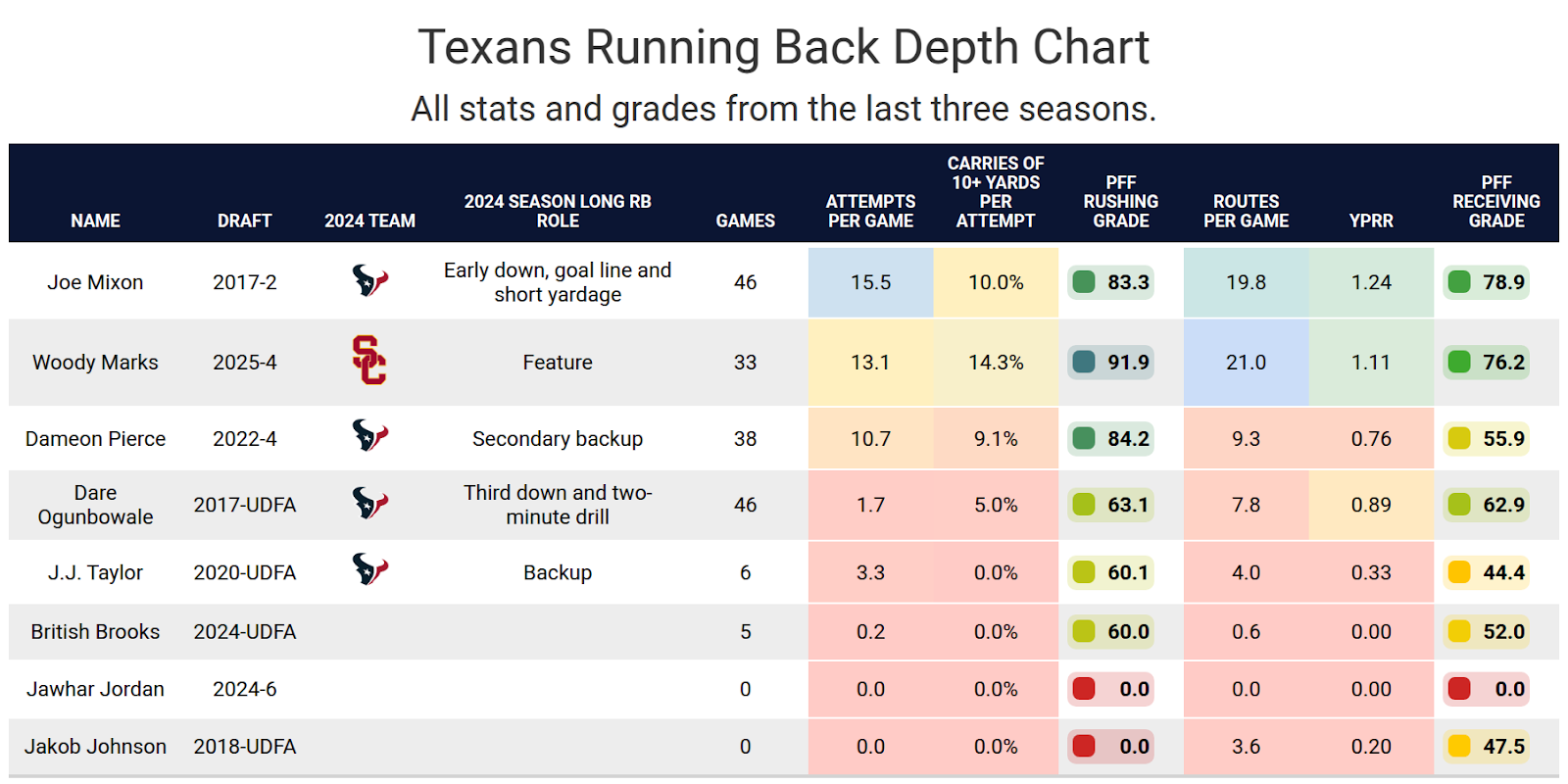
Impact of teammates
The Texans brought in a new offensive coordinator in Nick Caley. This will be Caley’s first time leading an NFL offense, so the offense will be less predictable than most. We can be decently confident that Mixon will still have a lead role, based on past offenses Caley’s been a part of and the Texans not bringing in any significant competition for the early down snaps. His offenses have been slightly run-heavy and average-to-good. This is largely in line with the Texans of last season.
The big question is how much more the team will pass this season relative to last season. Nico Collins missed five games, Stefon Diggs missed nine games, and Tank Dell missed three games last season. The team moved on from Diggs, and Dell is unlikely to play this year, but Houston traded for Christian Kirk and drafted Jayden Higgins in the second round and Jaylin Noel in the third. If Mixon’s fantasy production decreases this season, it would most likely be from the team passing more often, leading to fewer rushing attempts.
Mixon has played behind a below-average run-blocking offensive line every season of his NFL career, and that will be no different this year. Their former left tackle, Laremy Tunsil, was known throughout his career for being an excellent pass protector. Still, he was also the only Texans offensive lineman to earn a run-blocking grade above 64.0 last season. The team replaced Tunsil with Cam Robinson, who has graded 60.0 or worse in run blocking each of the previous six seasons. The other four projected starters all played a significant role last season, but the team also brought in other older veterans and spent a second-round pick on Aireontae Ersery. There should be a lot of competition for those starting jobs, which will ideally lead to a better version of the line, even without Tunsil.
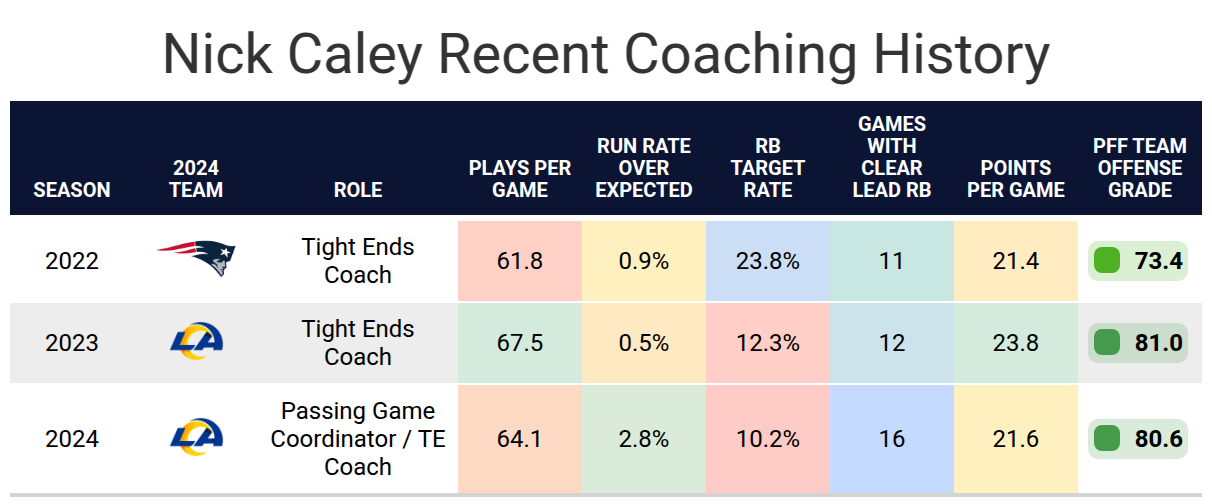

Bottom line
Mixon has consistently been a low-end RB1, and there is a chance his age, more receiving options and the loss of Laremy Tunsil could move him down a few spots. He is one of the safest options among the running backs available around RB9-RB16 by ADP.

Footnotes
- Statistics in tables and charts were chosen based on their ability to predict future fantasy performance on a per-game or per-opportunity basis or to describe the player relative to others at the same position.
- “Opportunities” are defined as passing dropbacks, rushing attempts and routes run as a receiver.
- Numbers are provided either by season or based on the past three years. For rookies, only college statistics are included. For non-rookies, only NFL statistics are considered, regardless of whether they played in college within the previous three years.
- As college competition is easier than NFL competition, most rookies are likely to see a decline from their historical numbers.
- Only FBS data is considered for college players and comparisons.
- Kneel-downs are removed from rushing data to provide cleaner quarterback rushing rate statistics.
- The table colors in this article range from blue (indicating good/high) to red (indicating bad/low).
- All percentiles and color codings compare the given player to others with a high sample of opportunities. Generally, the cutoff is one-third of the possible opportunities in the sample. If a player does not meet the threshold, they are still included in the comparison, though their results may appear better or worse than expected due to the smaller, less predictive sample size.
- Information on utilization classifications and their importance can be found here for running backs, wide receivers and tight ends.
This news was originally published on this post .





Be the first to leave a comment